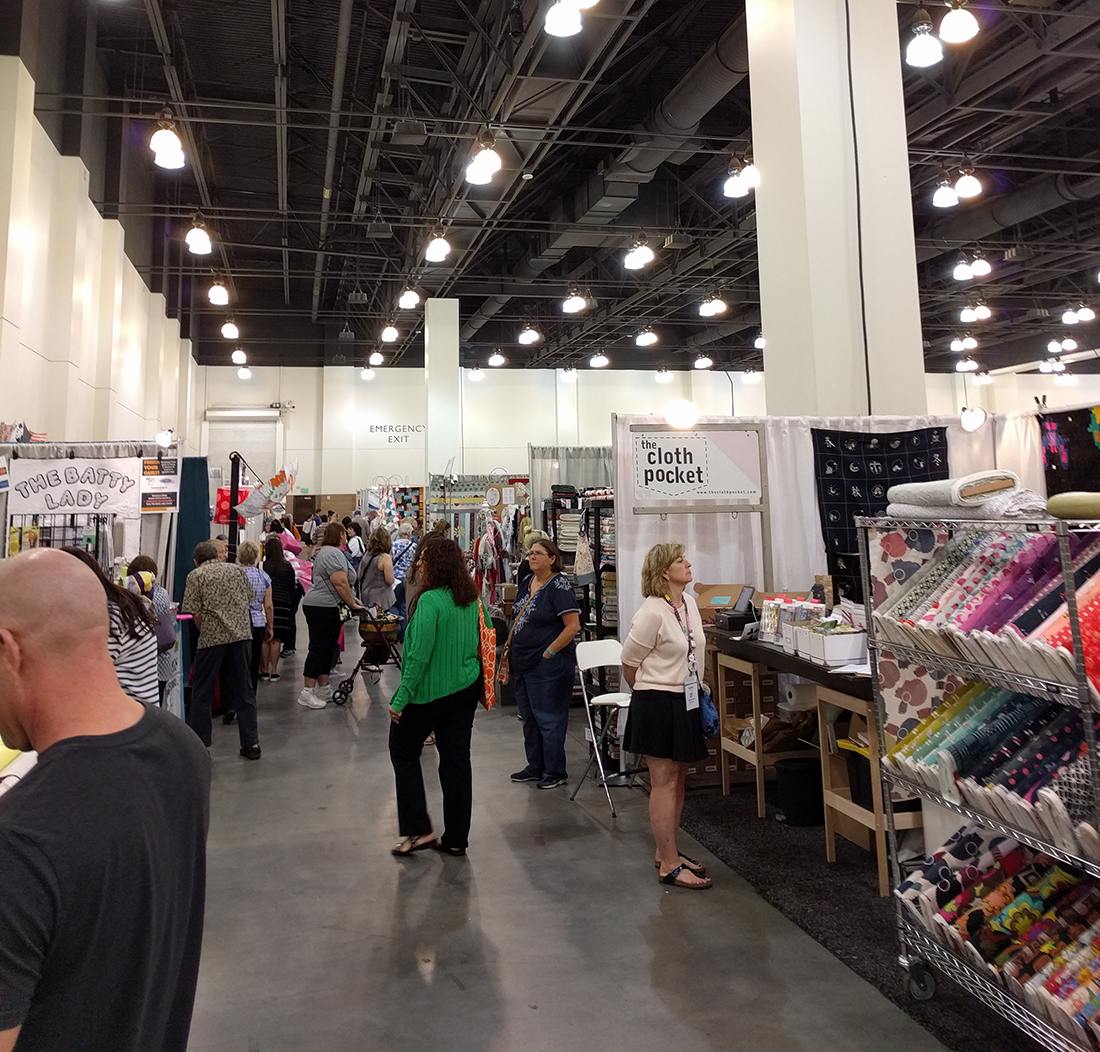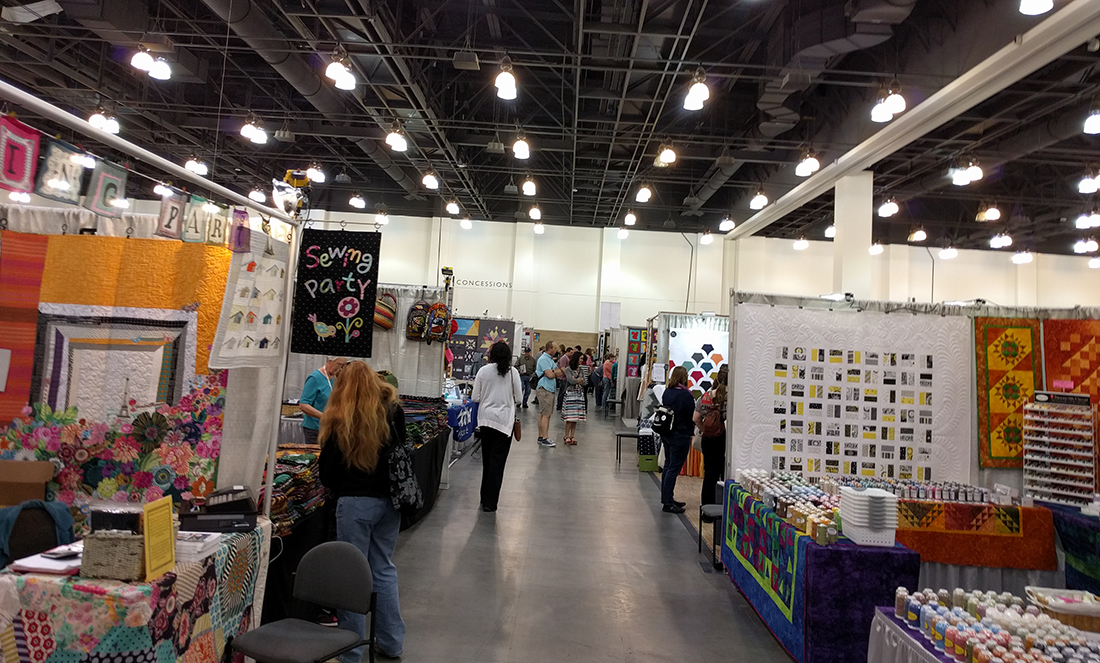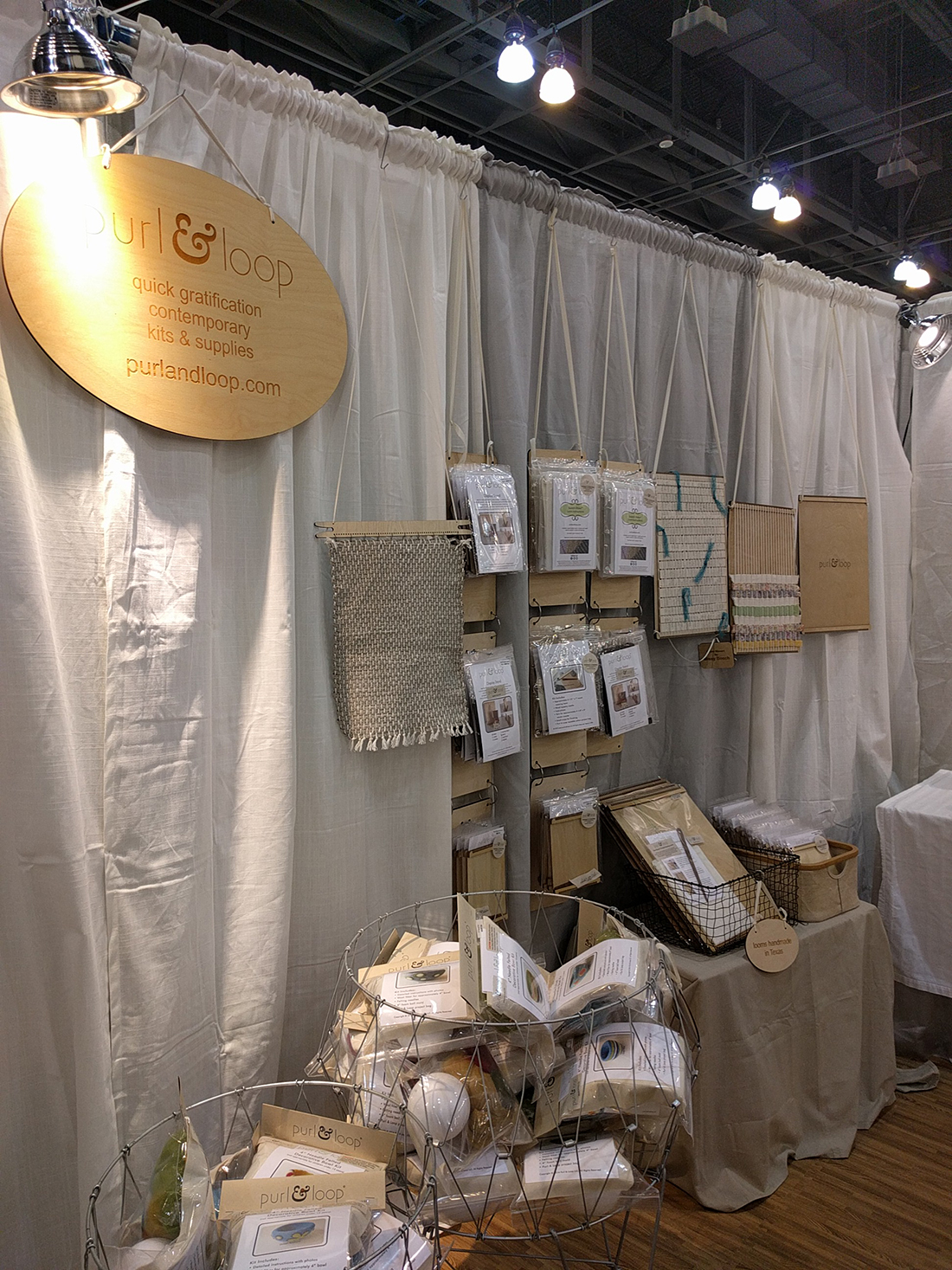
With its third event having come to a close in Pasadena, the Modern Quilt Guild’s QuiltCon West once again delivered an experience to savor for its students and guests. The beautiful venue spanned three halls of the conference center, with easy access to the Old City, shopping and various food options. QuiltCon West provided outlets not only for the quilting-obsessed but for those that wished to experience some of the city within easy walking distance. Like previous QuiltCons, the attendees were excited and happy to be able to connect with others they mostly only know from social media. One well-known quilting personality told me that it was her favorite show because of all the positive energy and excitement.
Vendors
The modern quilter’s relationship with social media is strong. At the request of attendees, name tags and quilt IDs at QuiltCon all had online handles in addition to the more usual information. This is a group that is very active, particularly on Instagram, and they have high expectations for the “eye candy” component. If you are planning to vend at QuiltCon, spend time thinking about how you’re going to attract these customers, because many are looking for visual stimulation as well as items to buy. Do your research on social media to see what is trending and how to target your displays.
QuiltCon may be smaller than some of the other national shows, yet there is huge potential for sales; several of the vendors I spoke with (some who are repeats from previous shows) have greater profits from QuiltCon than Festival. The vendors I spoke with emphasized two critical points: have an engaging appearance that connects with the modern quilting crowd and then have desirable product to sell. While this seems like a no-brainer, it is particularly true at QuiltCon where modern quilters are looking for shops that fit with their overall sense of aesthetics. Over those four days, I noticed that shops and businesses who relied on simply having their goods displayed with little to no thought given to an attractive display area received far less traffic and engagement.

Vendors also mentioned that there are two main groups they have identified as potential customers: the “stereotypical” younger modern quilter (generally 20s-30s or early 40s, often with young kids at home, and relatively limited resources) and the older modern quilter (generally retired, tends to be fully immersed in quilting, and more financial freedom). They said this can make it tricky when determining what to bring, especially for big ticket items.
If you’re a business that isn’t quilting-related, that’s OK! Purl and Loop, offering looms, needle felting kits, and other small items, was also very busy at the show. If you are another kind of maker, particularly one who enjoys a crossover with the modern quilting world through social media (stuffies, clothing, etc.,) , it might be a good idea to check out QuiltCon and see if it is a possible fit for you. Small graphic design and photography businesses, such as Lindsie Bergevin and Kristy Zaccharias and Nissa Brehmer, the duo behind Page + Pixel, were there looking to connect with other indie businesses who could use their services.

Other Independent Small Business Owners
Not having goods to sell should not prevent your active participation at QuiltCon as an independent business owner. Several of the big fabric companies and their representatives were present, holding booth space for display. Three publishing companies (C&T, Quiltmania and Lucky Spool) were also actively engaged in the vendor hall, although no magazines or online media were represented from what I saw. As a regional show (meaning that it moves from place to place), it is also presents opportunities for those engaged in teaching and offering workshops to connect with local guilds and shops.
Personally, as a longarm quilter, teacher, pattern designer and book author, I found great value in attending the show, making contacts for future teaching gigs, finding fabric lines and tools for my classes and online shop, and getting to know more of the quilting community. At an event such as QuiltCon with its intimate vibe, it is often easier and less fraught to make initial contact that I can follow up with at a later date, either at Market or elsewhere.
I also found it was a chance to connect in person with groups of friends who are also working on their businesses. These discussions often resulted in great brainstorming sessions, and I could see us setting something up for us to meet each year to do just that, outside of Market. While these usually happened after hours and informally, QuiltCon also had panels and discussions on these topics as part of their lecture series.

In Conclusion
QuiltCon provides a variety of opportunities for the small craft or quilting business, even as it provides a great show and supporting classes. To make it worth your while as a small business without a booth, take the time beforehand to thoroughly examine the list of vendors as well as the list of sponsors, and perhaps reach out before the show if there is someone in particular you’d like to meet. If you are planning to vend, be aware of your audience, and don’t overlook social media as a resource for building up your customer base before attending.

Great article Mandy! I think you offer some insightful perspective on this event.
As a vendor, the best part of QuiltCon is getting to talk with the customer directly. As the Publisher at C&T Publishing getting direct, honest consumer feedback can be hard to come by because I am known in the industry. At this show our Authors know me and that is it. So I get to hear what people really think and I love it. I learned that one of our product lines is tough to sell because it does not show what is inside (something we will fix on the next printing). QuiltCon is fun and full of energy and I wouldn’t miss it.
I enjoyed this perspective! It’s nice to hear that vendors can and do make a good profit at QuiltCon. Good shopping is a nice part of the show, and while I couldn’t travel this year, I’ll be at the next one!